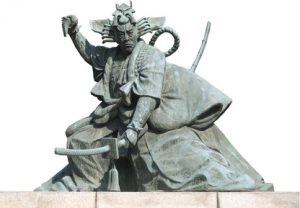Lead Your Business Through Change Like a Samurai

How are you leading your business? Let’s explore some leadership principles that you can apply to help you lead your business through any challenges, changes, or complexities.
Taking your organization through change requires the skills of a samurai – knowing when to make changes, when to leave things as they are, and staying centered through the entire process. The situation is compounded by the complexity associated with moving targets in an ever-changing environment.
The Samurai
The word “samurai” has interesting roots. When asked, most people think it means “warrior”, “fighter”, or some other word associated with fighting. It actually means, “to serve.” More specifically, it means to serve something or someone higher than oneself.
The samurai looks at the broader picture and chooses specific actions accordingly. This approach is critical when making organizational changes, some of which may be enjoyable and others painful.
Like a samurai, you can use the principles of martial arts and Zen, combine them with concepts from complexity theory, and develop an approach to changing your organization.
Martial Arts
Technique is important with organizational change. Your methods can vary depending upon the circumstances. In Aikido there is a proverb that goes something like this, “When you come upon a rock be water and flow around it. When the ground is shifting be a tree and establish roots.” This knowing when to flex and when to hold your ground is critical.
Zen
How do you pick from all different ways to organize? In what order should they be used? In a lot of situations, there are probably so many methods and types of advice, one can get overwhelmed.
The key to the decision-making is establishing and keeping an eye on your goals and values.
Zen offers some good advice: Be immovable. Now, this doesn’t mean be stubborn. It also doesn’t mean being stuck. What it does mean is: have all decisions reflect movement towards desired goals.
Complexity
With everyone understanding the business’s goals and values, do something very interesting: take the organization back-and-forth between equilibrium and disequilibrium. When things are going well – let them be (equilibrium). When a change is needed, shake things up and let the team decide how best to organize or reorganize (disequilibrium).
Now that you’ve learned about some effective leadership approaches as your business grows and takes on new challenges, take TAKE THE CHAOS QUIZ to find out how you are navigating the complexity of doing business.

Recent Comments